Opinion & Analysis
Preventing injuries on the LPGA Tour: A case study with Madelene Sagstrom
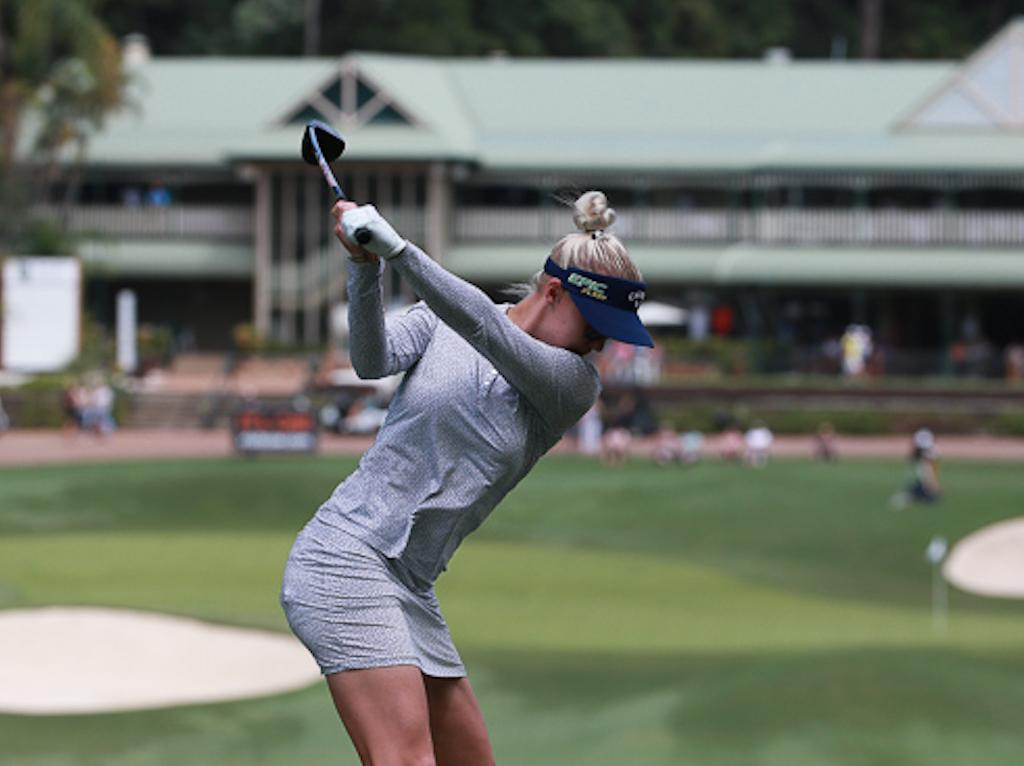
This article is co-authored with Anne-Lise Bidou.
Anne-Lise is a French physiotherapist (trained in France and Australia), currently working on the LPGA Tour. Her current stable of players includes Hannah Green, Lizette Salas, Morgan Pressel, Paula Creamer, Mel Reid, Maria Fassi, Madelene Sagstrom, Mariah Stackhouse, Alena Sharp, Ashleigh Buhai, Laura Gonzalez Escallon and Tiffany Chan.
You can follow Anne-Lise and her life / work on tour – Instagram and Facebook
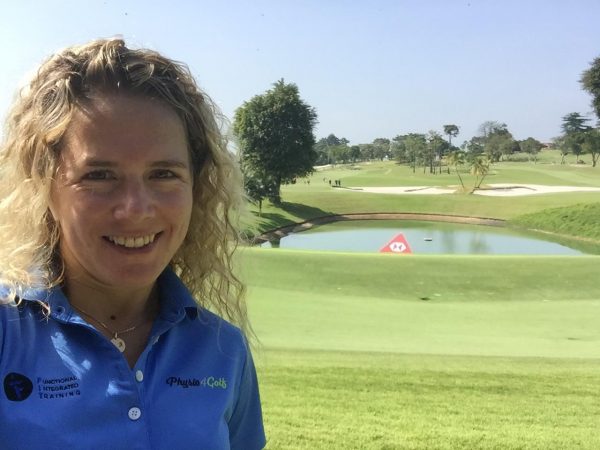
Anne-Lise Bidou – Physio 4 Golf
Source of Injuries
My primary role as a physiotherapist working on tour, is to keep my players injury free. I’m obsessed with prevention over cure, and really want to avoid “treating” my players for constant niggles and issues. There are, of course, several factors that contribute to injury risk, but the one that is most important and often neglected or misunderstood, is stability. Creating stable joints and spinal segments is all about activating and strengthening deep muscles, whilst holding good posture or position.
In my experience working with elite female players, a lack of stability in the spine and especially around the shoulder girdle, combined with poor upper body strength, is the cause of many of the common injuries that occur in the upper body (wrist, shoulder, neck and upper back/ribs).
All golfers, but especially highly skilled players, will do anything to try and make great contact with the ball. If that means they have to contort their body into an unnatural position, then they will! Now if they repeat that contortion thousands of times, without having great strength and stability around the shoulder girdle, those common injury sites are going to take a beating!

Michelle Wie has recently undergone season-ending wrist surgery
Key for Prevention
One of the key stabilizers for the shoulder girdle is actually located on our back: the shoulder blade (scapula) has a huge influence on the shoulder joint and its mechanics, which has a ripple effect up and down the chain (neck, elbow, wrist). Gaining control and stability of the shoulder blade will contribute hugely to removing strain from these common injury sites, and usually results in better movement and swing mechanics also.
This is why a key focus for my approach to creating more robust players, is to really increase the activation and strength of the deep muscle system surrounding the shoulder blade. Usually, Trapezius, Serratus Anterior and Rhomboids get a lot of attention—they are often weak and not controlled very well.
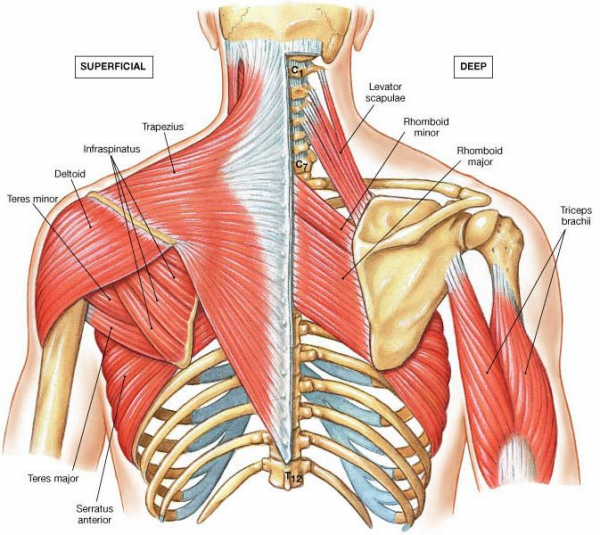
The muscles that attach to the shoulder blade
Madelene
A good example of how I aim to address this problem with my players is the work I have done with Madelene Sagstrom in 2019. You may recognise Madelene from her incredible rookie year as a pro, when she dominated the Symetra Tour, smashing the tour’s performance records on her way to the LPGA Tour.
Last year Madelene suffered from right shoulder pain (shoulder impingement), and when we started working together in February this year, she presented with reduced shoulder range of motion, due to a combination of poor tissue extensibility and altered motor control. These are often the result of common movement compensations seen when a player lacks strength in their rotator cuff muscles and scapular stabilizers.
For Madelene, this resulted in severe scapular dyskinesia (lack of control of the shoulder blade) and certainly wasn’t helped by significant general upper body weakness.
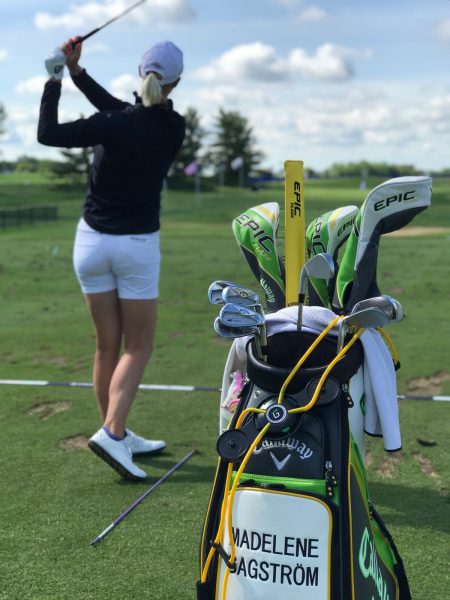
Sagstrom racked up 11 top 5 finishes in 15 starts on the Symetra Tour
Lots of reps combined with that weakness and instability was a significant factor for Madelene and her shoulder issues; she is very dedicated with her practice and spends a lot of time at the range (pretty common for a Swede!). She also moves the club very fast (11th on LPGA Tour in driving distance), and adding speed to any unstable system only aggravates issues.
On the plus side, her high work high ethic also applies to her gym work and guided rehab exercises; Madelene really enjoys training and working out with intensity. All I needed to do was introduce some key principles and equipment in order to make sure she was able to focus on building strength and stability around that all-important shoulder, upper spine and scapula.
Exercise Examples
Our sessions usually include some mobility exercises, cardio, movement prep including activation exercises with the GravityFit TPro and then strength/power exercises, during which we also use the GravityFit TPro, mainly for postural feedback and axial loading.
With so much else going on during a tournament week, workout time is limited and precious on tour. So I find exercises that kill two or even three birds with one stone really effective. The example below is part core stability (narrow base of support), part shoulder stability (row movement and bracing), part postural awareness (GravityFit TPro on Madelene’s back).
The exercise below is significantly harder than Madelene is making it look, and one of my favorite ways to train the elements that I see as critical to preventing upper-body injuries.
Below is another of my favorite multi-purpose gym moves; here Madelene performs a reverse lunge with cable wood chop. This time we are hitting those areas in a different way: core strength (rotational movement under load, using shifting and narrow base of support: the lunge), shoulder stability (bracing against wide grip on the bar), postural awareness via the GravityFit TPro. We also get additional lower body balance and stability work via the lunge component.
Since we started working together, incorporating the GravityFit TPro into exercises such as those demonstrated above, Madelene has improved her scapular stability significantly. This has helped to eliminate her shoulder pain, improved her movement quality and even contributed to an increase in clubhead speed of 2 mph!
If you suffer from upper extremity injury, or simply want to move a little better in your golf swing, then I highly recommend addressing the stability around your shoulder blade and upper back, along with improving overall upper body strength and posture.
- LIKE36
- LEGIT2
- WOW0
- LOL3
- IDHT1
- FLOP3
- OB3
- SHANK7
19th Hole
Vincenzi’s 2024 Zurich Classic of New Orleans betting preview

The PGA TOUR heads to New Orleans to play the 2023 Zurich Classic of New Orleans. In a welcome change from the usual stroke play, the Zurich Classic is a team event. On Thursday and Saturday, the teams play best ball, and on Friday and Sunday the teams play alternate shot.
TPC Louisiana is a par 72 that measures 7,425 yards. The course features some short par 4s and plenty of water and bunkers, which makes for a lot of exciting risk/reward scenarios for competitors. Pete Dye designed the course in 2004 specifically for the Zurich Classic, although the event didn’t make its debut until 2007 because of Hurricane Katrina.
Coming off of the Masters and a signature event in consecutive weeks, the field this week is a step down, and understandably so. Many of the world’s top players will be using this time to rest after a busy stretch.
However, there are some interesting teams this season with some stars making surprise appearances in the team event. Some notable teams include Patrick Cantlay and Xander Schauffele, Rory McIlroy and Shane Lowry, Collin Morikawa and Kurt Kitayama, Will Zalatoris and Sahith Theegala as well as a few Canadian teams, Nick Taylor and Adam Hadwin and Taylor Pendrith and Corey Conners.
Past Winners at TPC Louisiana
- 2023: Riley/Hardy (-30)
- 2022: Cantlay/Schauffele (-29)
- 2021: Leishman/Smith (-20)
- 2019: Palmer/Rahm (-26)
- 2018: Horschel/Piercy (-22)
- 2017: Blixt/Smith (-27)
2024 Zurich Classic of New Orleans Picks
Tom Hoge/Maverick McNealy +2500 (DraftKings)
Tom Hoge is coming off of a solid T18 finish at the RBC Heritage and finished T13 at last year’s Zurich Classic alongside Harris English.
This season, Hoge is having one of his best years on Tour in terms of Strokes Gained: Approach. In his last 24 rounds, the only player to top him on the category is Scottie Scheffler. Hoge has been solid on Pete Dye designs, ranking 28th in the field over his past 36 rounds.
McNealy is also having a solid season. He’s finished T6 at the Waste Management Phoenix Open and T9 at the PLAYERS Championship. He recently started working with world renowned swing coach, Butch Harmon, and its seemingly paid dividends in 2024.
Keith Mitchell/Joel Dahmen +4000 (DraftKings)
Keith Mitchell is having a fantastic season, finishing in the top-20 of five of his past seven starts on Tour. Most recently, Mitchell finished T14 at the Valero Texas Open and gained a whopping 6.0 strokes off the tee. He finished 6th at last year’s Zurich Classic.
Joel Dahmen is having a resurgent year and has been dialed in with his irons. He also has a T11 finish at the PLAYERS Championship at TPC Sawgrass which is another Pete Dye track. With Mitchell’s length and Dahmen’s ability to put it close with his short irons, the Mitchell/Dahmen combination will be dangerous this week.
Taylor Moore/Matt NeSmith +6500 (DraftKings)
Taylor Moore has quickly developed into one of the more consistent players on Tour. He’s finished in the top-20 in three of his past four starts, including a very impressive showing at The Masters, finishing T20. He’s also finished T4 at this event in consecutive seasons alongside Matt NeSmith.
NeSmith isn’t having a great 2024, but has seemed to elevate his game in this format. He finished T26 at Pete Dye’s TPC Sawgrass, which gives the 30-year-old something to build off of. NeSmith is also a great putter on Bermudagrass, which could help elevate Moore’s ball striking prowess.
- LIKE6
- LEGIT2
- WOW1
- LOL0
- IDHT0
- FLOP2
- OB1
- SHANK1
19th Hole
Vincenzi’s 2024 LIV Adelaide betting preview: Cam Smith ready for big week down under

After having four of the top twelve players on the leaderboard at The Masters, LIV Golf is set for their fifth event of the season: LIV Adelaide.
For both LIV fans and golf fans in Australia, LIV Adelaide is one of the most anticipated events of the year. With 35,000 people expected to attend each day of the tournament, the Grange Golf Club will be crawling with fans who are passionate about the sport of golf. The 12th hole, better known as “the watering hole”, is sure to have the rowdiest of the fans cheering after a long day of drinking some Leishman Lager.
The Grange Golf Club is a par-72 that measures 6,946 yards. The course features minimal resistance, as golfers went extremely low last season. In 2023, Talor Gooch shot consecutive rounds of 62 on Thursday and Friday, giving himself a gigantic cushion heading into championship Sunday. Things got tight for a while, but in the end, the Oklahoma State product was able to hold off The Crushers’ Anirban Lahiri for a three-shot victory.
The Four Aces won the team competition with the Range Goats finishing second.
*All Images Courtesy of LIV Golf*
Past Winners at LIV Adelaide
- 2023: Talor Gooch (-19)
Stat Leaders Through LIV Miami
Green in Regulation
- Richard Bland
- Jon Rahm
- Paul Casey
Fairways Hit
- Abraham Ancer
- Graeme McDowell
- Henrik Stenson
Driving Distance
- Bryson DeChambeau
- Joaquin Niemann
- Dean Burmester
Putting
- Cameron Smith
- Louis Oosthuizen
- Matt Jones
2024 LIV Adelaide Picks
Cameron Smith +1400 (DraftKings)
When I pulled up the odds for LIV Adelaide, I was more than a little surprised to see multiple golfers listed ahead of Cameron Smith on the betting board. A few starts ago, Cam finished runner-up at LIV Hong Kong, which is a golf course that absolutely suits his eye. Augusta National in another course that Smith could roll out of bed and finish in the top-ten at, and he did so two weeks ago at The Masters, finishing T6.
At Augusta, he gained strokes on the field on approach, off the tee (slightly), and of course, around the green and putting. Smith able to get in the mix at a major championship despite coming into the week feeling under the weather tells me that his game is once again rounding into form.
The Grange Golf Club is another course that undoubtedly suits the Australian. Smith is obviously incredibly comfortable playing in front of the Aussie faithful and has won three Australian PGA Championship’s. The course is very short and will allow Smith to play conservative off the tee, mitigating his most glaring weakness. With birdies available all over the golf course, there’s a chance the event turns into a putting contest, and there’s no one on the planet I’d rather have in one of those than Cam Smith.

Louis Oosthuizen +2200 (DraftKings)
Louis Oosthuizen has simply been one of the best players on LIV in the 2024 seas0n. The South African has finished in the top-10 on the LIV leaderboard in three of his five starts, with his best coming in Jeddah, where he finished T2. Perhaps more impressively, Oosthuizen finished T7 at LIV Miami, which took place at Doral’s “Blue Monster”, an absolutely massive golf course. Given that Louis is on the shorter side in terms of distance off the tee, his ability to play well in Miami shows how dialed he is with the irons this season.
In addition to the LIV finishes, Oosthuizen won back-to-back starts on the DP World Tour in December at the Alfred Dunhill Championship and the Mauritus Open. He also finished runner-up at the end of February in the International Series Oman. The 41-year-old has been one of the most consistent performers of 2024, regardless of tour.
For the season, Louis ranks 4th on LIV in birdies made, T9 in fairways hit and first in putting. He ranks 32nd in driving distance, but that won’t be an issue at this short course. Last season, he finished T11 at the event, but was in decent position going into the final round but fell back after shooting 70 while the rest of the field went low. This season, Oosthuizen comes into the event in peak form, and the course should be a perfect fit for his smooth swing and hot putter this week.

- LIKE10
- LEGIT3
- WOW0
- LOL1
- IDHT0
- FLOP1
- OB1
- SHANK1
Opinion & Analysis
The Wedge Guy: What really makes a wedge work? Part 1

Of all the clubs in our bags, wedges are almost always the simplest in construction and, therefore, the easiest to analyze what might make one work differently from another if you know what to look for.
Wedges are a lot less mysterious than drivers, of course, as the major brands are working with a lot of “pixie dust” inside these modern marvels. That’s carrying over more to irons now, with so many new models featuring internal multi-material technologies, and almost all of them having a “badge” or insert in the back to allow more complex graphics while hiding the actual distribution of mass.
But when it comes to wedges, most on the market today are still single pieces of molded steel, either cast or forged into that shape. So, if you look closely at where the mass is distributed, it’s pretty clear how that wedge is going to perform.
To start, because of their wider soles, the majority of the mass of almost any wedge is along the bottom third of the clubhead. So, the best wedge shots are always those hit between the 2nd and 5th grooves so that more mass is directly behind that impact. Elite tour professionals practice incessantly to learn to do that consistently, wearing out a spot about the size of a penny right there. If impact moves higher than that, the face is dramatically thinner, so smash factor is compromised significantly, which reduces the overall distance the ball will fly.
Every one of us, tour players included, knows that maddening shot that we feel a bit high on the face and it doesn’t go anywhere, it’s not your fault.
If your wedges show a wear pattern the size of a silver dollar, and centered above the 3rd or 4th groove, you are not getting anywhere near the same performance from shot to shot. Robot testing proves impact even two to three grooves higher in the face can cause distance loss of up to 35 to 55 feet with modern ‘tour design’ wedges.
In addition, as impact moves above the center of mass, the golf club principle of gear effect causes the ball to fly higher with less spin. Think of modern drivers for a minute. The “holy grail” of driving is high launch and low spin, and the driver engineers are pulling out all stops to get the mass as low in the clubhead as possible to optimize this combination.
Where is all the mass in your wedges? Low. So, disregarding the higher lofts, wedges “want” to launch the ball high with low spin – exactly the opposite of what good wedge play requires penetrating ball flight with high spin.
While almost all major brand wedges have begun putting a tiny bit more thickness in the top portion of the clubhead, conventional and modern ‘tour design’ wedges perform pretty much like they always have. Elite players learn to hit those crisp, spinny penetrating wedge shots by spending lots of practice time learning to consistently make contact low in the face.
So, what about grooves and face texture?
Grooves on any club can only do so much, and no one has any material advantage here. The USGA tightly defines what we manufacturers can do with grooves and face texture, and modern manufacturing techniques allow all of us to push those limits ever closer. And we all do. End of story.
Then there’s the topic of bounce and grinds, the most complex and confusing part of the wedge formula. Many top brands offer a complex array of sole configurations, all of them admittedly specialized to a particular kind of lie or turf conditions, and/or a particular divot pattern.
But if you don’t play the same turf all the time, and make the same size divot on every swing, how would you ever figure this out?
The only way is to take any wedge you are considering and play it a few rounds, hitting all the shots you face and observing the results. There’s simply no other way.
So, hopefully this will inspire a lively conversation in our comments section, and I’ll chime in to answer any questions you might have.
And next week, I’ll dive into the rest of the wedge formula. Yes, shafts, grips and specifications are essential, too.
- LIKE32
- LEGIT7
- WOW1
- LOL1
- IDHT2
- FLOP3
- OB1
- SHANK3
-

 19th Hole2 weeks ago
19th Hole2 weeks agoDave Portnoy places monstrous outright bet for the 2024 Masters
-

 19th Hole2 weeks ago
19th Hole2 weeks agoTiger Woods arrives at 2024 Masters equipped with a putter that may surprise you
-

 19th Hole23 hours ago
19th Hole23 hours ago‘Absolutely crazy’ – Major champ lays into Patrick Cantlay over his decision on final hole of RBC Heritage
-

 19th Hole3 weeks ago
19th Hole3 weeks agoReport: Tiger Woods has ‘eliminated sex’ in preparation for the 2024 Masters
-

 19th Hole1 week ago
19th Hole1 week agoTwo star names reportedly blanked Jon Rahm all week at the Masters
-

 19th Hole1 week ago
19th Hole1 week agoReport: LIV Golf identifies latest star name they hope to sign to breakaway tour
-

 19th Hole1 week ago
19th Hole1 week agoNeal Shipley presser ends in awkward fashion after reporter claims Tiger handed him note on 8th fairway
-

 19th Hole6 days ago
19th Hole6 days agoBrandel Chamblee has ‘no doubt’ who started the McIlroy/LIV rumor and why













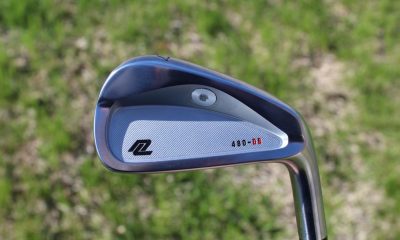









Trevor Montgomery
Aug 16, 2019 at 5:38 pm
Having worked with tour players and winners on the USPGA and European tours for the last 20 years I find that scapula stability is a key component that needs to be assessed and addressed appropriately to reduce injury risk and improve performance and consistency. Addressing scapula control issues can lead to increases in trunk rotational range by upward of 20% and certainly decreases injury risk to segments above and below. Kibbler reported that 68-100% of people with should joint problems had concurrent scapula dyskinesia. It is my experience that scapula stability is often unaddressed with athletes – great article for highlighting this important segment.
ZQ
Aug 1, 2019 at 12:15 pm
Shoulder girdle main issue for injuries LOL!
Back, hips, and elbow/wrist = way more prominent. Terrible article.
MhtLion
Aug 1, 2019 at 6:15 pm
How I’m reading the article is that because typical females have week shoulder girdles which provide the stability, they tend to overuse back, hips, elbow, and writs, and end up injuring those.
North Hinkle
Jul 31, 2019 at 10:28 pm
I find this article limited in its discussion, specifically to the upper body and shoulder. Almost all of my injuries are knee and ankle and are due to core weakness creating stress on the lead leg joints. It is typical for men to have leg injuries when their core is weak (note Steph Curry his first 2 seasons in the NBA until he fixed his core).
When I had good core, my strain was always the lead shoulder infraspinatinus – it would get worn out mid season and I just had to deal with it.
Overall, I just think this article lacks depth and general applicability. A bunch of talk about LPGA players (women) having weak upper bodies, and then one story about a player the author helped.
I find no unique insight or advancement preventing golf injury other than LPGA players pay the author money. Then again, LPGA players have believed in KT tape and I remember seeing a stupid number of PGA players wearing copper bracelets.
Enough said.